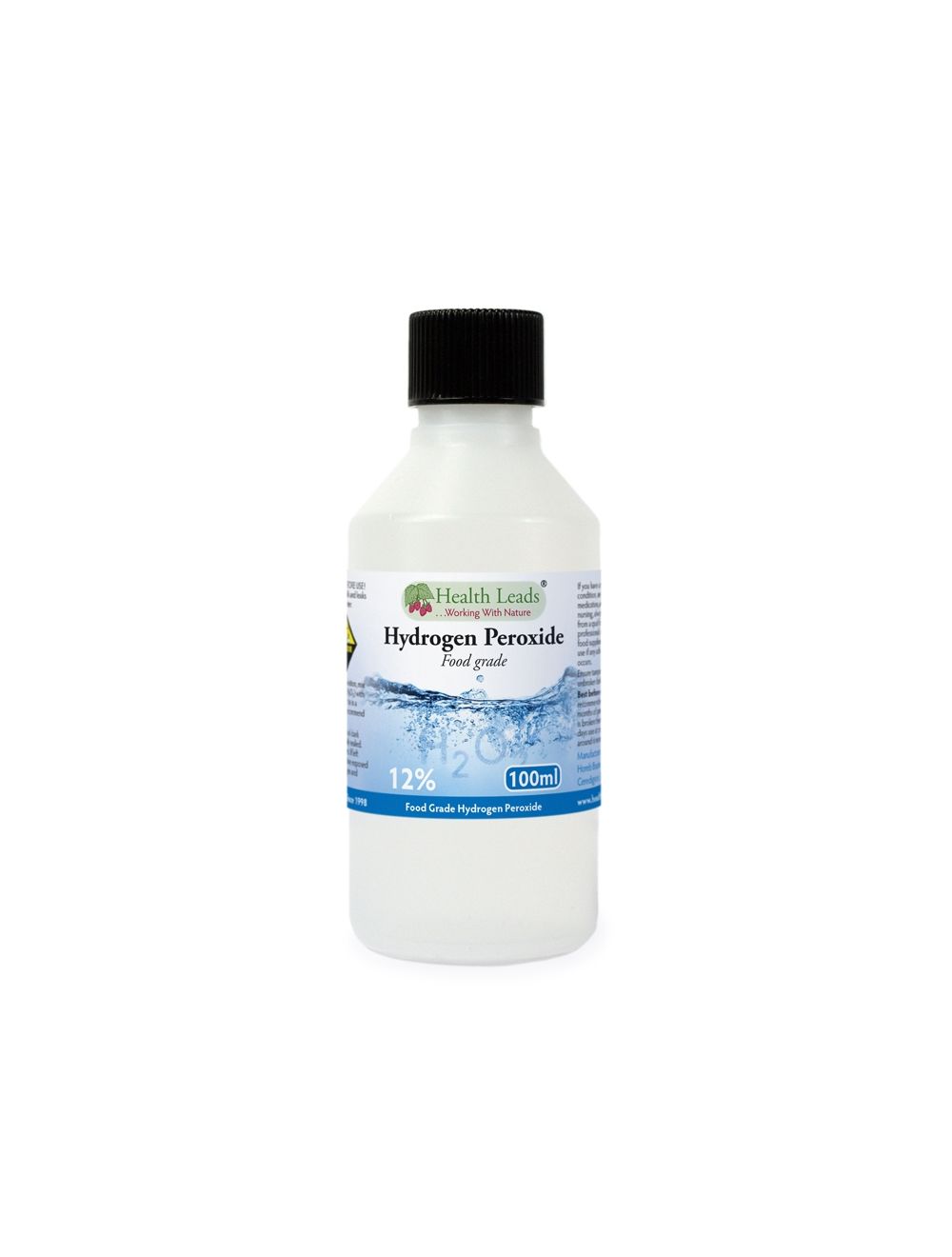Please note: This item cannot be transported customers outside the UK.
What is Hydrogen Peroxide?
In simple terms, Hydrogen Peroxide consists of two hydrogen atoms and two oxygen atoms, as shown in the chemical formula H2O2.
Hydrogen Peroxide is very similar to water (H2O), but the extra oxygen atom produces one of the most useful and powerful oxidizers known to man— Hydrogen Peroxide (oxygen-rich water). Also known as superoxide, Hydrogen Peroxide is made in the body, for instance, white blood cells produce, amongst other things, Hydrogen Peroxide to kill germs and fight infections.
What does Hydrogen Peroxide do?
Often associated with hair bleaching or teeth whitening Hydrogen Peroxide has a wide range of uses. A truly multi-purpose disinfectant, Hydrogen Peroxide kills germs and bacteria. External use of food grade Hydrogen Peroxide is approved even in countries such as the USA, Canada and the UK, which are very conservative on issues of healthcare.
When used as a disinfectant, Hydrogen Peroxide very quickly breaks down into water, releasing the extra oxygen atom, which then creates oxidization – if bacteria are present, fizzing can be seen.
NHS hospitals use Hydrogen Peroxide, as they realize its efficacy against a wide range of environmentally associated nosocomial pathogens (superbugs). A company called BIOQUELL have a Hydrogen Peroxide vapour machine to decontaminate tools, wards and rooms.
Some uses for Hydrogen Peroxide:
Plant care: Add 3ml of 3% food grade Hydrogen Peroxide to 1 litre of water (2½ tsp per gallon). To start, use a lower concentration and after a few weeks increase to the higher concentration listed above.
Laundry: Use 330ml of 3% food grade Hydrogen Peroxide with your washing instead of chemical bleaches. Not on colours.
Cleaning/Sanitizing/Disinfectant: In the kitchen use 3% food grade Hydrogen Peroxide in a spray bottle. Used on surfaces and work tops, it leaves a fresh smell and the surface bacteria free. In the bathroom use half 3% solution and half distilled water in a spray bottle. This does not inhibit processes in the septic tank (unlike other household bleaches).
Food Sterilization: Soak your fruit and vegetables in a washing bowl filled with water and 45ml of 3% food grade Hydrogen Peroxide. Depending on the size, soak for 20-30 minutes, then rinse, drain, dry and leave in the fridge. It has been noted that doing this will prolong the life of fruit and vegetables.
Removing Earwax: Tilt your head to one side, use an eye dropper bottle to dispense 3% Hydrogen Peroxide so it fills the ear canal (do not do this if ear drum is damaged). Very quickly you should notice a bubbling in the ear. If the bubbling reduces after five minutes, repeat the process until the bubbling stops completely. Now repeat on the other ear. Make sure you keep a towel close by to wipe up any residue. For occasional use only.
Nasal Spray: Mix 1 tablespoon of 3% Hydrogen Peroxide with 220ml of distilled water for use with a nasal spray. Use 2-3 squirts throughout the day when you start experiencing signs of congestion.
Mouthwash: Simply use 3% food grade Hydrogen Peroxide.
There are a number of different grades of Hydrogen Peroxide:
• 3% Pharmaceutical Grade — available for purchase at most high street chemist's; used for cleaning wounds and as a general household disinfectant. This grade of Hydrogen Peroxide can contain a whole range of stabilizers, such as acetanilide, phenol, sodium stanate and tetrasodium phosphate
• 6% Beautician Grade —used as hair colorant; also contains stabilizers
• 12% Food Grade — diluted from 35% Food Grade to comply with EU regulations
• 30% Reagent Grade — used in scientific experiments; also contains stabilizers
• 30% to 35% Electronic Grade — used to clean electronic equipment
• 35% Technical Grade — contains phosphorus to neutralize tap water (if added).
• 35% Food Grade — this is used in many food preparation processes, for instance, in aseptic packaging, where it is sprayed onto foil lined material used for packaging fruit juices, etc. This grade of Hydrogen Peroxide is only available to those with a government issued EPP licence.
Suggested Adult Use
IMPORTANT: Never use at the full 12% strength.
Hydrogen Peroxide (H2O2) must be diluted for safe use.
To dilute to a 3% solution use 1 part 12% food grade Hydrogen Peroxide to 3 parts distilled water.
For example, to make 400ml of 3% H2O2, use 100ml of 12% H2O2 with 300ml of distilled water.
Warning: 12% H2O2 is a strong oxidizer — when handling, always use rubber gloves and safety glasses.
KEEP OUT OF REACH OF CHILDREN.
Store out of direct sunlight in a cool dark place making sure the cap is tightly sealed. Keep away from children and pets. If left open even for short periods of time exposed to air and or light it will lose oxygen and decompose degrade into water.
We recommend use within six months of purchase. Once the seal is broken there is around 50 days use at peak strength with around 6 months of activity.
Health Leads formula
Hydrogen Peroxide 12% solution
Other ingredients: None
Packaging: PET plastic bottle with tamper-proof cap inside a larger white plastic container with resealable lid.
Also enclosed: full dilution/usage instructions, 1 pair of hypoallergenic, powder-free, latex-free gloves and a 3ml PET pipette for your convenience





